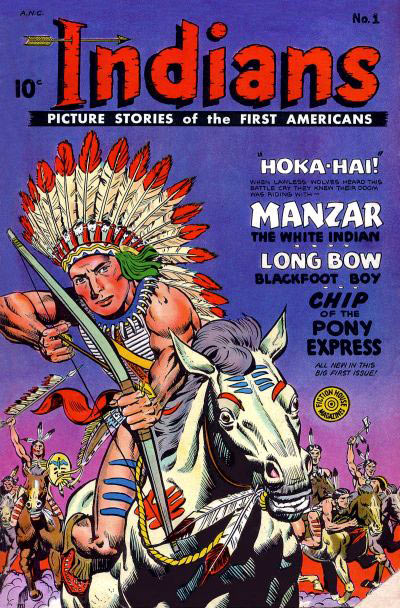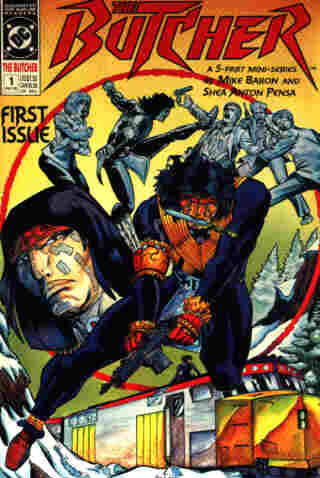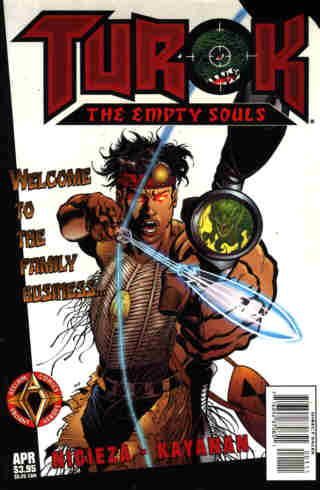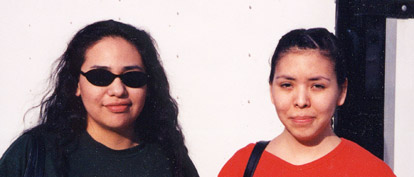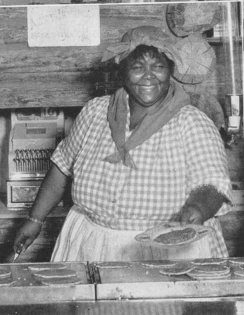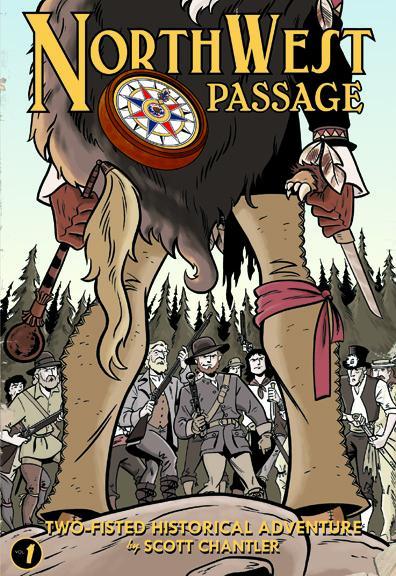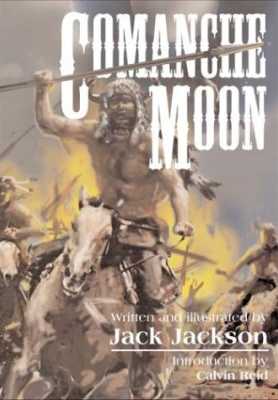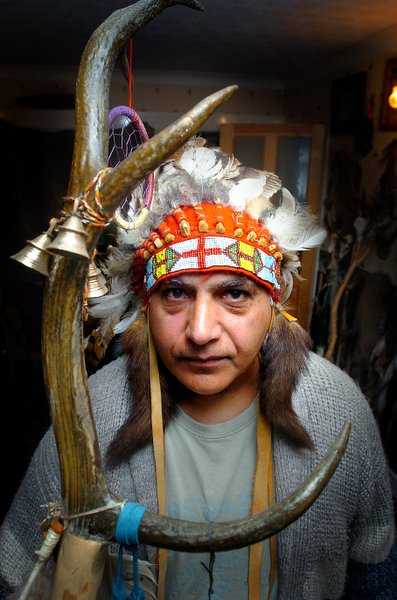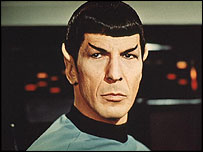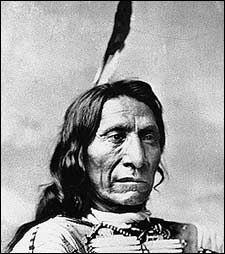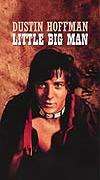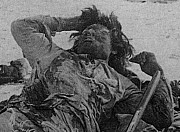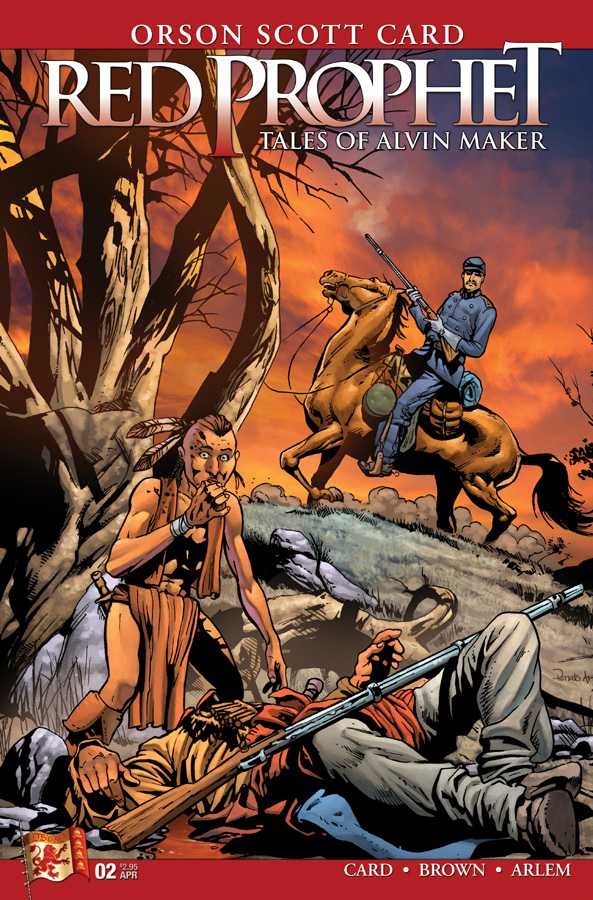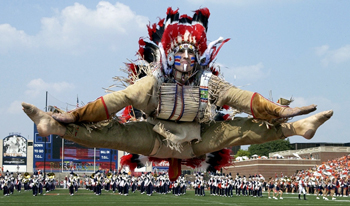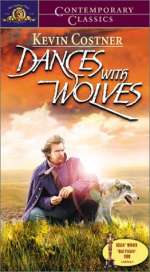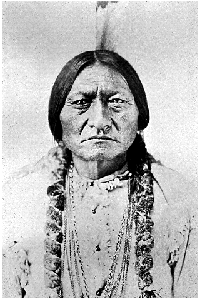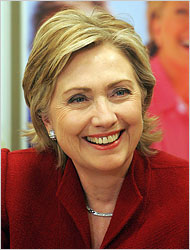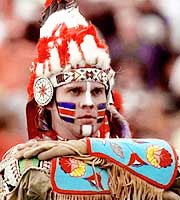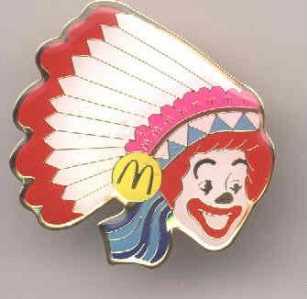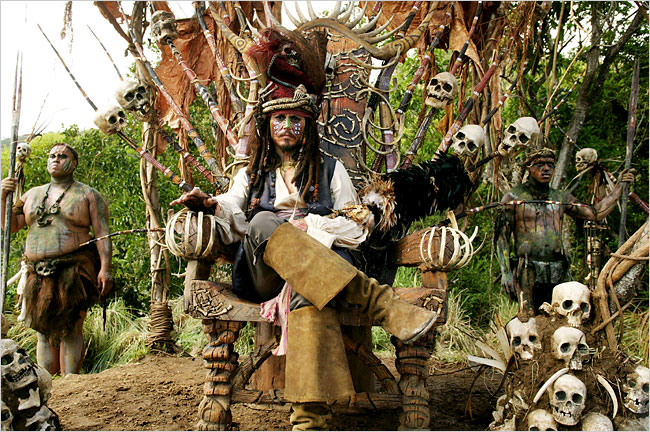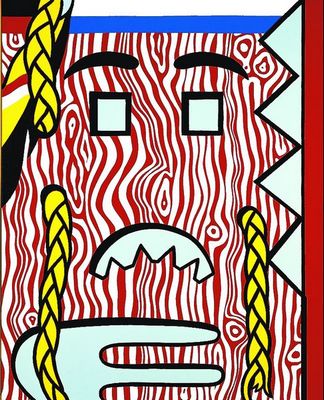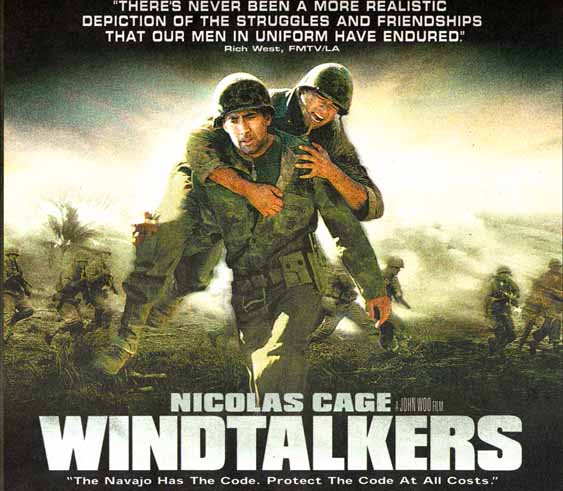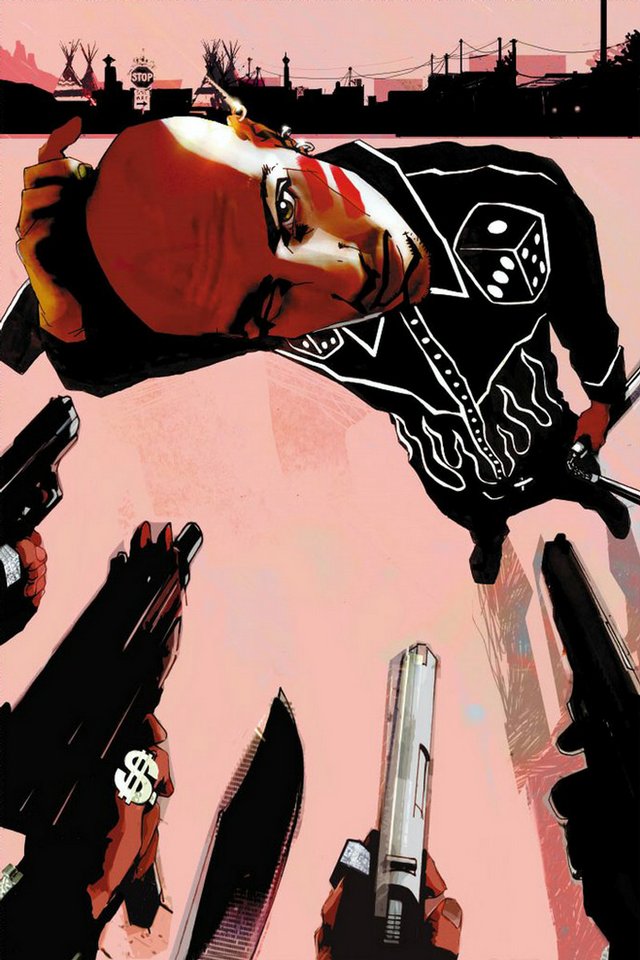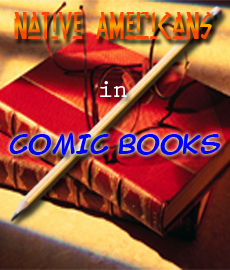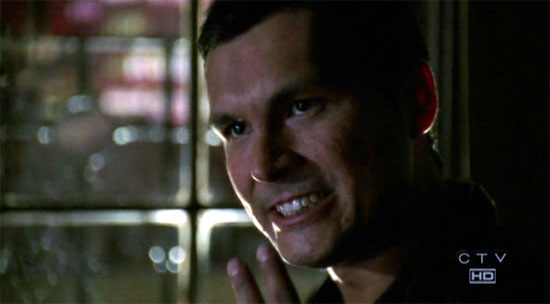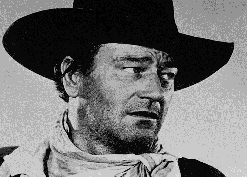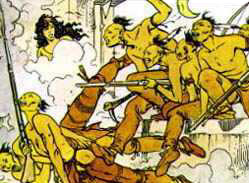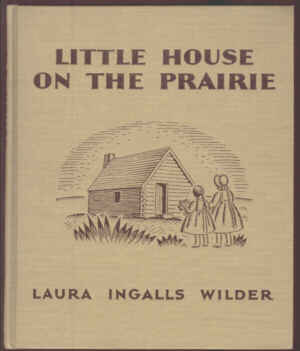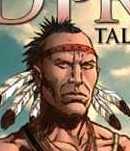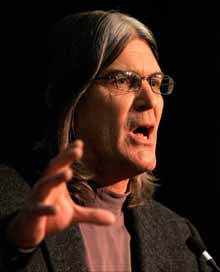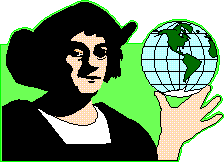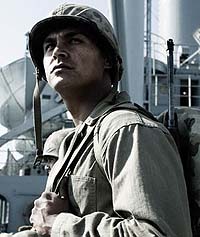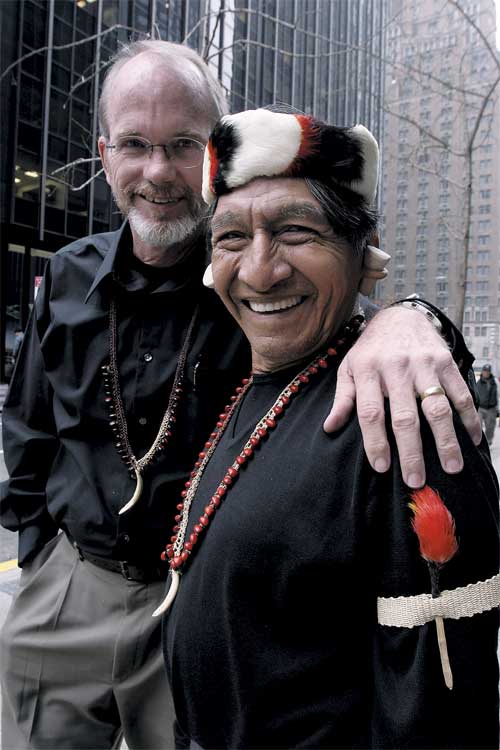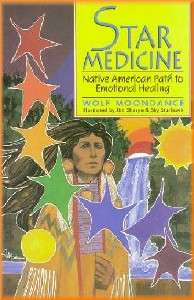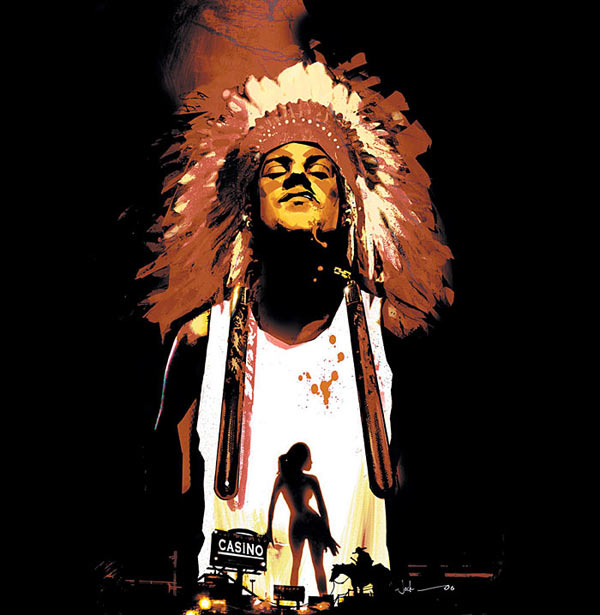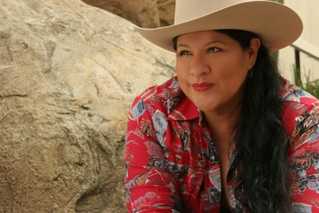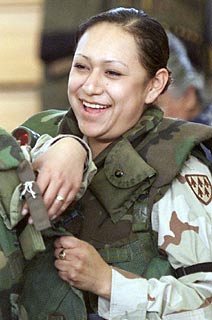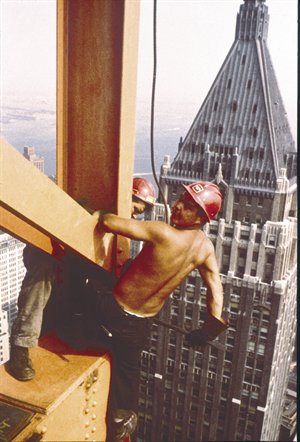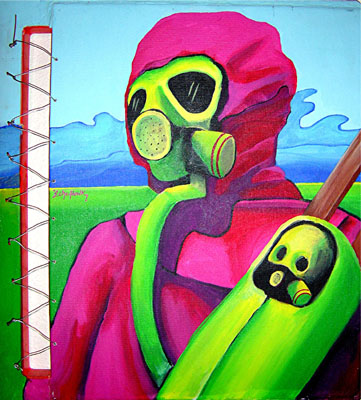Native Americans in Comics"For every good comic there are probably 50 titles that severely misrepresent us," Sheyahshe lamented. "Comics like 'Red Ryder' denigrate us with simple-minded, child-like characters like Red's sidekick, Little Beaver. Titles like 'Tomahawk' (from the 1950s, not the Vertigo one-shot), 'White Indian' and 'Scalphunter' seem to convey the message that white people make better Indians than we do."
"To say there is room for improvement for Indigenous representation in current popular media would not adequately address how much disparagement still occurs," Sheyahshe said. "Nor would it adequately suggest that there is an urgent need for more Native authors, artists, writers, and everything in between to get out there and make things better by infiltrating the entertainment industry and reshaping those old, worn out stories into ones we can truly call our own.
"Sure, things have improved marginally overall in comics as well as many other genres, Sheyahshe continued. "But this slight improvement is not enough; it is far too little too late. We are way overdue for a major breakthrough and change across the board in every media source. I look forward to reading comic books that shatter all of these misrepresentations."Comment: This is a fine article overall with too many worthy points to quote or summarize. I'm glad to hear of THE RAVEN and DESPERADOES, which I wasn't aware of. You learn something every day.
But naturally, I take exception to a few things:
The article skipped a lot of the history of fictional Indians by starting with the dime novels of the late 19th century. It ignored the legends of good Indians such as Pocahontas and Squanto, the first Thanksgiving myth, the Boston Tea Party and other Indian-themed protests, the writings of Fenimore Cooper and Longfellow, the plays about Metamora and Minnehaha, the artwork of Remington and Russell, and the Wild West shows. Only after these other forms of cultural transmission did the dime movels add their, um, two cents' worth.You could argue that there wasn't enough room to mention all these things, but this is a Web-based article. More to the point, it wasn't necessary to start with a historical overview. If you're going to do an overview, take a paragraph to sum up the whole history.
I think the article overstated how the noble savage or shaman has become the predominant image of Indians. It understated the lasting power of the Indian as warrior, killer, or animal. Comics still feature many plain ol' savages (e.g., SCALPED, COWBOYS & ALIENS), half-breeds (SHAMAN'S TEARS, Echo), and angry veterans (SCOUT, Super-Chief).As usual, I disagree with Mark Waid (an old story). Tonto represents the good Indian, but there's still a good Indian/bad Indian dichotomy. The characters in SCALPED, the movie The Missing, or (I gather) DESPERADOES: A MOMENT'S SUNLIGHT represent the negative side of Indian portrayals. And although Tonto is undoubtedly the most famous fictional Indian, people still envision a Plains Indian "brave" or chief when they envision Indians, not a Woodlands Indian like Tonto.Ironically, Waid's Super-Chief is one of the more stereotypical Indian superheroes in recent years. This character is a standard warrior-veteran with a magic-based grandfather straight out of the
Thunderbird/Butcher/Scout era of the late 1970s. Sixties characters such as Pow-Wow Smith and Wyatt Wingfoot were more original and they appeared more than 40 years ago.
Jason Aaron seems to want to have it both ways with SCALPED. On the one hand, he's done "a lot of research" because he's writing about "real people and a real location" with "a tremendous amount of respect." On the other hand, it's a "fictional crime book" in which he's "exploiting the setting."So if you enjoy SCALPED because of its authenticity, he'll take the credit. But if you criticize SCALPED because it's stereotypical, he won't take the blame. Sorry if you're offended, I imagine him saying, but it's just entertainment.
SCOUT, TRIBAL FORCE, and CHICKASAW ADVENTURES were all breakthroughs of one sort or another, but I'm not sure anyone would pick them as great Native-themed comics. I wouldn't. I list what I consider the best Native-themed comics at Comic Books Featuring Indians. These include COMANCHE MOON, Sitting Bull: The Life of a Lakota Chief, and the new RED PROPHET series.Publishers are kiddings themselves if they think huge numbers of critics are waiting to pounce on any negative portrayal of Indians. I've read several reviews of SCALPED and COWBOYS & ALIENS, for instance, and I'm about the only one to slam the stereotypes in these comics. Fact is, Indians have a lot of things to worry about besides comic books. And most of these comics aren't popular enough to generate a lot of responses.I'd say the critical situation is no worse for Indians than it is for any other minority. To which the publishers might respond, "Yes, which is why we don't do
minority-themed comics in general." To which I might respond, "Minorities aren't as hyper-sensitive as you depict them. They criticize your minority-themed comics only because you don't do them right. Start doing them right and you'll get praise rather than pans."
Anyway, this article was a great undertaking with good results. Kudos to writer Emmett Furey, who covers the Native American beat for Comic Book Resources. (Yes, there is such a thing, apparently.) I'll try to keep you posted whenever he writes about Indians in comics.
